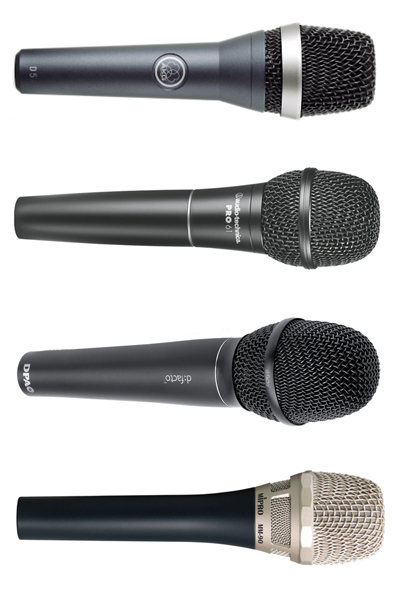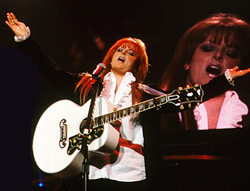The crowd waits impatiently for the lights to come up, to hear a single voice rise in song, riding above the instruments. The vocal microphone in the singer’s hand, reinforced by the rest of the signal chain, carries a voice to thousands of eager listeners that would scarcely reach the first rows unaided.
Of course, mics have reinforced vocals for many decades, and by allowing singers to be heard, they’ve played an integral role in the rise of the popular singer. The basic design uses a relatively small, flexible diaphragm that is excited by the voice, followed by one of several methods to turn that motion into an analogous electrical current.
Incremental improvements have lead to a vast array of useful vocal mics, including some current offerings that bring studio quality to live sound. So what characteristics make for an excellent vocal microphone?
The Basics
A vocal mic is most often in a format that can be easily held in the singer’s hand, balanced and comfortable to give freedom of movement without fatigue. Even when stand-mounted, the low profile doesn’t block the singer’s connection with the audience.
Internal shock-mounting of the mic element is critical, since handhelds are continually gripped and moved during use. Many mics use sound-deadening materials and finishes on the handle to dampen the sound of bumps, ring clicks, and finger movements.
Durability is key, since mics on the road don’t always receive the gentlest of treatment during setup and teardown – not to mention when they’re in the hands of certain performers. They need to be able to withstand being dropped repeatedly without causing any detrimental change to the performance of the element or internal electronic components.
Live vocal mics are most often used at close range to the mic capsule, from lips touching to a couple inches away. Just inside the durable mesh screen, layers of foam windscreens – as acoustically transparent as possible – are added to minimize p-pops, excessive sibilance, and breath noise.
Close use brings with it the accentuated low end known as proximity effect, and mic designers work to control this with the positioning of the element and porting of the mic head. Proximity effect can also benefit vocalists with less powerful or thinner voices.
With stage levels typically high, monitor wedges still common, and drum kits and guitar amps nearby, polar patterns must be consistently controlled across the entire frequency spectrum so that the mic captures the singer’s voice without also picking up other instruments or requiring excessive EQ to try to control feedback. Often a “presence peak” is engineered into the frequency response to increase the intelligibility and “cut” of the voice.
Dynamics & Condensers
Virtually every microphone manufacturer offers handheld vocal microphones, often with multiple models for different styles and budgets – both condenser and dynamic, and the occasional ribbon. The ubiquitous Shure SM58 cardioid dynamic remains in wide use more than 45 years after its introduction, either through familiarity and availability or by request of the vocalist.
On the other end of the scale, manufacturers better known for specialty and measurement microphones are now offering high-performance touring vocal condensers, exemplified by the DPA d:facto and Earthworks SR40V.
Dynamic designs are typically rugged, somewhat less responsive in the very high frequencies, moderate in sensitivity (though neodymium magnetic structures introduced in the mid-1980s added several dB to the output and often increased high-end frequency response), and priced in the lower to mid range.

Some examples include the AKG D Series, Audix OM Series, Audio-Technica Pro Series, beyerdynamic TG-X Series, Electro-Voice N/DYM Series, and Sennheiser e900 Series. Most manufacturers offer patterns ranging from cardioid to supercardioid to hypercardioid, accommodating a wide variety of vocal applications.
Roadworthy condensers have proliferated in the past several years, and in conjunction with the advances in mixing consoles and loudspeaker systems, mean that the quality of the live vocals can sometimes approximate a recording.
These mics often borrow transducer technology from their studio counterparts, adding shock-mounting, pattern control, internal windscreens, and modified electronic circuitry into a durable handheld format. They’re also becoming increasingly accessible in terms of price and feature set, exemplified by developments like the MIPRO MM-89 and MM90 (hypercardioid).”
Certain newer condensers are widely cited as “favorite vocal mics” by several engineers I’ve spoken with recently, citing natural sound with almost no additional EQ, “airy” high end, consistent off-axis frequency response, and good transient response.




















